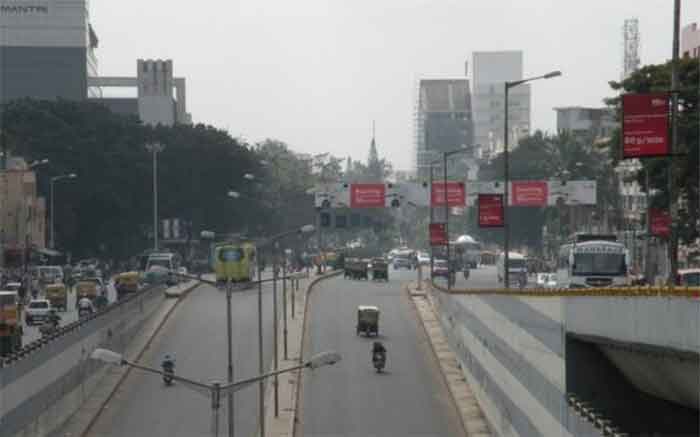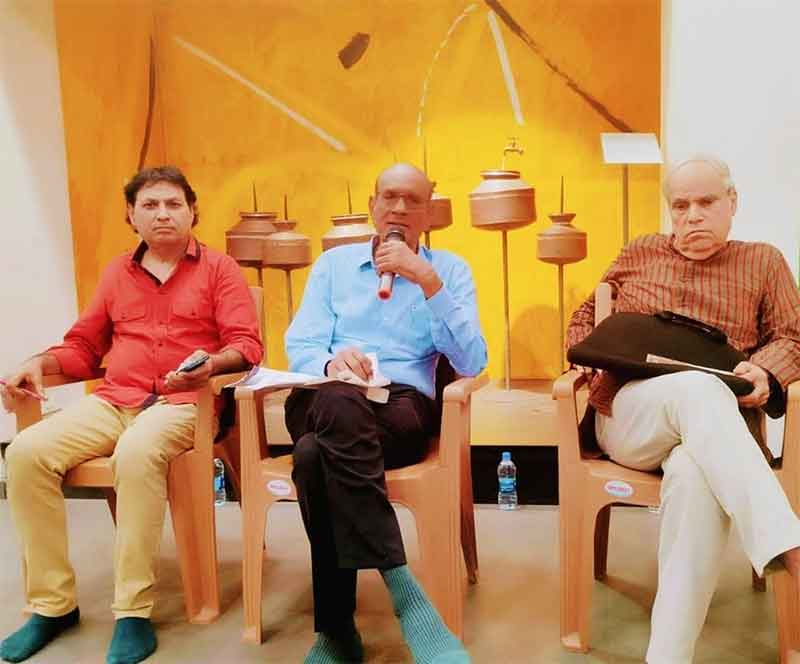
Bannerghatta is an area in the city of Bengaluru, Karnataka that is known for its biological park, the Bannerghatta National Park which spreads for approximately 104 acres and is known for its tiger and lions safaris, and state highway 87 (Bannerghatta road) which stretches for 49 km and is renowned for its connectivity with the main city to the outskirts of Bengaluru, most notably to the national park. The area also has several corporate and IT multinational companies, educational institutions, and major hospitals. Hence, it is often considered a prime real estate destination and has seen many urbanisation projects take place within the past 15 to 20 years, including the construction of the Namma metro, which began in early 2019.
A deeper study of the area in contemporary times reveals many problems that have almost crippled an area with great urban potential. There are three key issues: traffic congestion on Bannerghatta Road, the elevated corridor over Bannerghatta National Park, and illegal sand mining in the Bannerghatta Forest area and national park. The three issues sum up the current situation of Bannerghatta, which has been left to succumb under the pressure of overpopulation and mismanagement.
Over the years, as rapid urbanisation continued unabated and unplanned, the Bannerghatta road has been dismantled due to inefficient urban planning by the government to an extent where the this area’s problems have rendered the damage irreparable. The public consensus is that the road has been left vulnerable to flooding, potholes, and traffic due to the civic administration’s improper planning and development, and this has crippled one of the most important stretches of road in Bengaluru. The problems go beyond just the road surface and right up to the highs of the elevated corridors and the lows of the underground tunnels of the pink line of the Namma metro phase-3 that has been mired in controversy. The idea of constructing a metro line on the road had been floating around since the late 2000s but due to a delay in the issuance of tenders by the government until 2017, the construction of the ORR-BGR line only began in early 2019 with an initial deadline of 2024 but due to the onset of COVID, along with the lethargy displayed by the BMRCL officials, and a sudden change to the tender holders due to inefficient work of the previous contractors has resulted in the new deadline being pushed to early 2025. However, as it has been seen over time, the Bengaluru urban planning sector has been riddled with a history of pushed deadlines, and hence, it would not surprise if, by 2027, the inauguration of the pink line is not given the green light.
Further, the delayed completion of Namma Metro adds to the already existing traffic congestion that has resulted in increased travel time, an increase in road accidents for commuters using the road daily, and the presence of malls, schools, and IT companies add to the traffic issues on the pothole-laden road.
Bannerghatta National Park and the larger forest area face similar problems of government proposal for an elevated corridor to ease traffic congestion, and illegal sand mafia, which has caused unprecedented environmental problems. These issues are getting more complicated with high incidence of corruption cases in Karnataka.
The Karnataka state government proposed the elevated corridor and is part of the 280-km Satellite Town Ring Road (STRR), being constructed around Bengaluru to reduce traffic and restrict the movement of heavy vehicles in the state capital. A proposal was made in 2018-19 to cut through BNP but was put on hold with rising opposition from conservationists, activists, and serving and retired forest officials. Karnataka High Court had asked the state government to halt work on the elevated corridor project until it decided on a case related to the Bengaluru Metropolitan Planning Committee (MPC). MPC, the statutory body responsible for city planning and approving major projects like the elevated corridor, needs to be fixed. The dysfunctional nature of MPC can be attributed to the appointment of officials lacking the necessary vision and leadership to introduce and implement policies and projects that are helpful in resolving the various issues faced by Bengaluru, and Bannerghatta can be observed to represent the perfect case of everything that went wrong with Bengaluru’s metropolitisation.
The other major issue that has arisen due to the above-mentioned issues is that of illegal sand mining and the rise of the sand mafia in the city which has had an unrivalled influence on the city’s urban planning process. The mafia has been reported to have attacked journalists reporting its illegal activities at the eco-sensitive zone around Bannerghatta National Park. The accused were sent to judicial custody for 15 but this incident is a smaller issue among the larger umbrella of the power that the sand mafia wields over the urban political processes. A plethora of incidents like these have resulted in the state Revenue Minister Krishna Byre Gowda admitting that the government is helpless in controlling the rampant illegal sand mining by claiming that banning the activity will raise the price of sand, and its legalisation will result in uncontrolled sand mining operations across the state. He also asked other ministers for suggestions to tackle this issue. This was in response to former minister and Yeshwanthpur MLA ST Somashekar, who raised the issue of illegal stone quarrying near Bengaluru, said that in one case, the license has been given for quarrying in 46 acres of land. But quarrying is being done on more than 100 acres of land.
However, this does not imply that the government has not brought or discussed any measures to fight against illegal sand mining. In 2014, the then Public Works Department Minister H C Mahadevappa said the State government is seriously considering a proposal to invoke the Goonda Act with provisions to arrest those involved in illegal sand mining.
The case of Bannerghatta can be considered to be the micro version of Bengaluru, as all the issues it faces can be analysed in various other areas of the city and it represents the things that went wrong with the planning and development of the city after the 2000s. It calls for immediate corrective actions by government and urban planners working at par.
Pratosh V is pursuing BA History, Economics and Political Science in Christ University, Bangalore. He can be reached at [email protected]















































